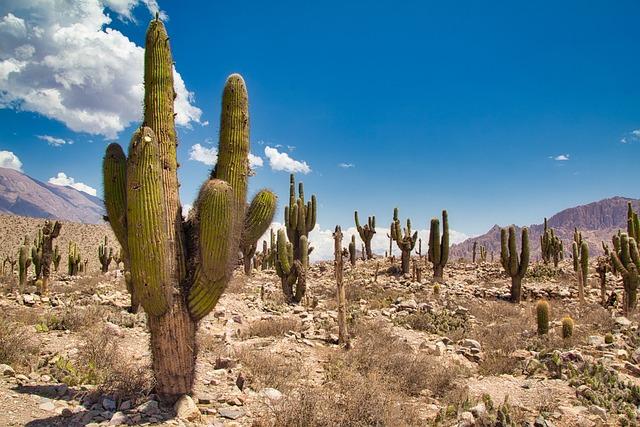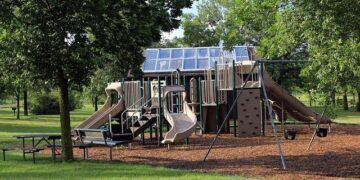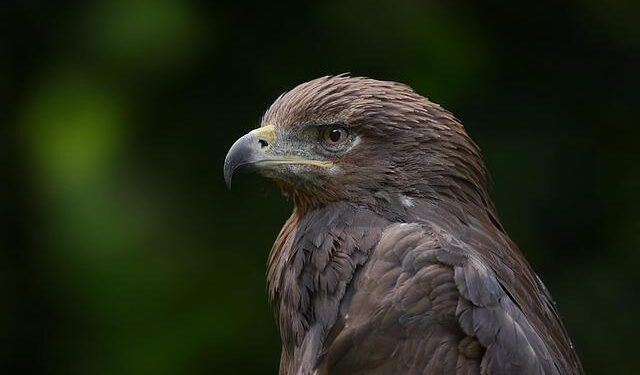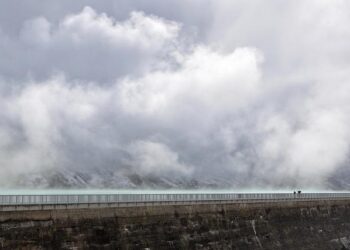On February 18, nature enthusiasts and curious minds alike are invited to embark on a journey into the wonders of the Spread Eagle Barrens State Natural Area, a gem nestled in Wisconsin’s diverse landscape. This event, hosted by the Wisconsin Department of Natural Resources, promises an engaging exploration of the ecology and management practices that sustain this unique ecosystem. Participants will have the opportunity to delve into the intricate web of life that exists within the barrens, uncovering the delicate balance between flora and fauna that makes this area a sanctuary for wildlife. Whether you are a seasoned ecologist or a newcomer eager to learn, this day offers a chance to deepen your understanding of how conservation efforts shape our natural surroundings. Join us as we uncover the vital role of the Spread Eagle Barrens in protecting Wisconsin’s natural heritage and celebrate the efforts that ensure its preservation for generations to come.
Exploring the Unique Ecosystem of Spread Eagle Barrens State Natural Area

The Spread Eagle Barrens State Natural Area is a remarkable ecological gem nestled within Wisconsin’s landscape, offering a unique habitat that showcases the beauty and intricacies of biodiversity. This area is characterized by its sandy soils, open woodlands, and rare plant communities that thrive under specific climatic and geological conditions. Some key features of this ecosystem include:
- Unique Flora: Home to several rare and endangered plant species, including the Northern Prairie Orchid.
- Diverse Fauna: A variety of bird species and mammals, which find refuge in this unique habitat, making it a prime location for wildlife observation.
- Distinctive Habitats: The barrens, wetland areas, and upland forests create a patchwork of environments that support varied ecosystems.
In managing this delicate ecosystem, conservation efforts focus on maintaining the balance between human activity and natural processes. The Wisconsin DNR employs practices such as controlled burns and habitat restoration to promote the growth of native species while preventing the encroachment of invasive plants. A collaborative approach ensures that:
| Conservation Practice | Purpose |
|---|---|
| Controlled Burns | Restore native flora and reduce invasive species. |
| Habitat Restoration | Re-establish ecological balance and improve wildlife habitats. |
| Public Education | Raise awareness about the importance of biodiversity. |
Visitors to the Spread Eagle Barrens can engage with this vibrant environment through hiking trails, guided tours, and educational programs that foster a deeper understanding of ecological principles. By immersing themselves in this stunning landscape, they can observe the remarkable interplay between plant and animal life while learning about ongoing conservation efforts. Every visit supports the mission to preserve this unique natural area for future generations, making every step taken a contribution to a greater ecological cause.
Understanding the Role of Fire in Ecosystem Management

Fire plays a pivotal role in maintaining the ecological balance within various ecosystems, particularly in areas like the Spread Eagle Barrens State Natural Area. This natural phenomenon contributes to soil enrichment, fosters the growth of fire-adapted species, and helps in controlling invasive plant populations. By understanding and managing prescribed burns, we can create a healthier landscape that supports diverse flora and fauna, ensuring the longevity of native habitats.
Among the myriad benefits of fire in ecosystem management are:
- Promoting Biodiversity: Fire encourages the growth of native species that rely on periodic burns for their life cycles.
- Reducing Fuel Loads: Controlled burns help mitigate the risk of uncontrolled wildfires by reducing accumulated vegetation.
- Encouraging Wildlife Habitat: Many animal species thrive in post-fire environments, which can create new habitats and food sources.
To effectively implement fire management, it is essential to understand its timing and frequency. The following table outlines the general guidelines for burn management within the Spread Eagle Barrens:
| Season | Ideal Burn Time | Purpose |
|---|---|---|
| Spring | March – May | Stimulate growth of wildflowers and grasses |
| Fall | September - November | Prepare soil for next year’s growth cycle |
| Winter | December – February | Control woody plant encroachment |
By embracing fire as a beneficial tool in ecosystem management at the Spread Eagle Barrens, we can enhance ecological resilience while promoting sustainable practices. Natural disturbances, when understood and managed appropriately, can lead to a vibrant and balanced ecosystem that thrives for generations to come.
Native Species: Biodiversity and Conservation Strategies

Understanding the ecological importance of native species is essential for maintaining the delicate balance of ecosystems such as the Spread Eagle Barrens State Natural Area. Here, a diverse range of flora and fauna coexist, forming intricate webs of life that contribute to the overall health of the environment. Protecting these native species not only preserves the region’s unique character but also strengthens the resilience of ecosystems against invasive threats.
Conservation strategies employed within this natural area focus on restoring habitats and promoting biodiversity. Effective techniques include:
- Invasive Species Management: Regular monitoring and removal of non-native plant species to protect native biodiversity.
- Habitat Restoration: Replanting native vegetation and rehabilitating degraded areas to support local wildlife.
- Public Education: Engaging the local community through workshops and events to raise awareness about the importance of native species.
A key component of biodiversity efforts involves collaboration among various stakeholders. Tables that summarize the ongoing species recovery efforts and volunteer opportunities can facilitate community engagement. For instance, interested parties can participate in:
| Activity | Date | Location |
|---|---|---|
| Invasive Removal Day | Feb 20 | Spread Eagle Barrens |
| Native Plant Workshop | March 5 | Community Center |
| Wildlife Observation Event | April 10 | Spread Eagle Barrens |
Engaging the Community: Volunteer Opportunities and Educational Programs

Immerse yourself in the diverse ecosystem of Spread Eagle Barrens State Natural Area on February 18. This unique event offers a hands-on experience for individuals eager to understand the intricate balance of local ecology and the important role of natural resource management. Participants will engage in guided discussions and field observations, highlighting key components of biodiversity, habitat conservation, and the specific challenges faced by the landscape.
Learning extends beyond the classroom as volunteers will have opportunities to:
- Assist in habitat restoration projects: Hands-on activities such as planting native species and removing invasive plants.
- Participate in guided educational walks: Explore the area’s flora and fauna while gaining insights from experienced ecologists.
- Contribute to research efforts: Help collect data that is vital for ongoing ecological monitoring and studies.
For those interested in a deeper commitment, consider joining ongoing educational programs that include workshops on sustainability practices, conservation techniques, and wildlife management. Here’s a glimpse of upcoming sessions:
| Date | Program Title | Focus Area |
|---|---|---|
| March 10 | Native Plants Workshop | Identifying and cultivating local flora |
| April 15 | Wildlife Survey Training | Tracking and monitoring local species |
| May 21 | Ecological Restoration Efforts | Hands-on restoration techniques |
Final Thoughts
As we draw the curtain on our exploration of the Spread Eagle Barrens State Natural Area, we invite you to reflect on the delicate balance of ecosystems and the vital role that each of us plays in their preservation. The event on February 18, hosted by the Wisconsin Department of Natural Resources, promises not only to enlighten attendees about the unique flora and fauna of this remarkable area but also to inspire a deeper connection with the natural world. By understanding the ecology and management of such special places, we foster a greater appreciation for the importance of conservation efforts. We encourage you to participate, learn, and, most importantly, become advocates for the natural landscapes that enrich our lives. Together, we can ensure that areas like the Spread Eagle Barrens continue to thrive for generations to come. Join us in this journey of discovery and stewardship—because every step into nature is a step towards a brighter, more sustainable future.































